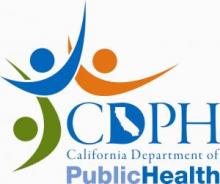Hospital Infection Rates Continue To Dip

The number of central line associated bloodstream and MRSA infections acquired in California hospitals dropped slightly in 2012 compared to the prior year, and is down considerably from less than a decade ago, according to data released last week by the state Department of Public Health.
Methicillin-resistant Staphylococcus aureus, or MRSA, is an often deadly infection when acquired in hospitals. It kills about 19,000 people a year, according to data from the Centers for Disease Control and Prevention. Hospitals have been more vigilant in recent years in compelling staff to wash their hands between patient contacts to reduce infections. At UCLA Medical Center, a group of graduate and undergraduate students keep tabs on the hand-washing of medical staff.
MRSA infections dropped 6% in 2012 compared to 2011, with a total of 817 cases reported, compared to 869 in 2011. And 45% of the 388 hospitals that reported data reported no cases at all, up from the 41.4% that were infection-free in 2011.
Rates of another form of the infection, known as vancomycin-resistant Enterococcus, were also down, with 825 cases last year versus 831 in 2011. However, 54% of hospitals reported a case, up from 48% in 2011.
Although central line infections are more treatable and have a lower mortality rate than MRSA, they also are more prevalent. There were 2,998 reported cases of such infections among the 389 hospitals that reported data to the CDPH. That is down 5% from the 3,163 reported in 2011, and 44% lower than in 2008.
Central line infections usually occur when the catheter is inserted without taking care to drape the patient's body or the physician in sterile gowns prior to the insertion. Such infections take about 6,000 lives per year nationwide, according to the CDC.
About a decade ago, a Johns Hopkins University medical professor, Peter Pronovost, M.D., developed a checklist for inserting a central line while avoiding infections. Hospitals have been slowly adopting the protocol.
In its report, the CDPH suggested a number of factors at work, including efforts to prevent infections, as well as prodding by Centers for Medicare & Medicaid Services to avoid hospital-acquired infections. Infection rates were 6% lower in general care wards, 13% lower in special care areas, and 22% lower in neonatal intensive care wards.
“It’s a good news story, but there’s still a lot of work that remains to be done,” said Jan Emerson-Shea, vice president of external communications for the California Hospital Association (CHA).
However, incidents of CLABSI increased 3% in general intensive care units. “CMS implementation and focus on CLABSI reporting in critical care locations beginning in 2011 may have contributed to the improved surveillance and may account in part for the observed CLABSI rate increase in California hospital critical care locations in 2012,” the report observed.Hospitals were less successful in cutting other forms of hospital-acquired infections. They were up 73% last year.
However, the CDPH noted in its report that the facilities just began reporting incidents during the first seven months of 2011, and not all of them were immediately in compliance. Overall, surgical procedures that were reported by the participating hospitals increased 68%.
Hospitals have been making an effort in that area to reduce the rates of infection as well. The CHA launched an initiative to reduce infections associated with knee, hip, coronary artery bypass graft, c-section, and colon procedures by 10% by the end of 2013.






